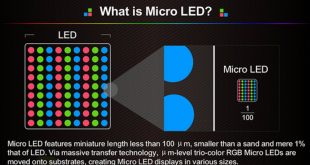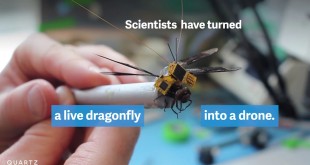Introduction:
In the world of digital imagery, there is a fascinating technology that can transform ordinary photographs into stunning works of art. Image mosaicing, also known as photo stitching, is a process that involves combining multiple images to create a single, seamless composition. This technology has revolutionized various fields, including photography, virtual reality, cartography, and even medical imaging. In this article, we will delve into the world of image mosaicing technology, exploring its principles, techniques, and the incredible results it can produce.
Need for Image Mosaicing
Image mosaicing, also known as photo stitching, serves a crucial purpose in the field of digital imagery. It addresses the limitations of capturing a scene with a single photograph and allows us to create a comprehensive and immersive representation of the subject.
One of the primary needs for image mosaicing is to expand the field of view. A single photograph may not be able to capture the entirety of a vast landscape or a wide architectural structure. By stitching multiple images together, we can create a panoramic view that encompasses a larger area, providing viewers with a more complete visual experience. This is particularly useful in landscape photography, where capturing the vastness and grandeur of the scenery is paramount.
Furthermore, image mosaicing enhances the detail and resolution of the final image. Each individual photograph contributes its unique details, and when merged seamlessly, the resulting composite image becomes richer and more intricate. This is advantageous in situations where capturing fine details or maintaining high-resolution imagery is crucial, such as in architectural documentation or product photography.
Another important aspect of image mosaicing is the creation of a seamless visual continuity. When images are stitched together effectively, the transition between them becomes virtually indistinguishable. This seamless blending creates a natural and coherent composition, allowing viewers to perceive the scene as if it were captured in one shot. It eliminates the visual disruptions that would occur when attempting to capture a wide scene using multiple photographs without stitching.
Moreover, image mosaicing technology has practical applications in fields like virtual reality and cartography. In virtual reality, image mosaics form the foundation for creating immersive 360-degree environments. By stitching together images from different viewpoints, users can explore virtual spaces and experience a sense of presence and immersion. Cartographers also utilize image mosaics to generate detailed maps and satellite imagery, providing accurate and comprehensive representations of geographic areas.
Understanding Image Mosaicing Technology:
Image mosaicing technology is based on the principle of aligning and blending individual images to create a larger, coherent whole. This can be used to create panoramic views, create high-resolution images of large objects, or even stitch together satellite images to create a map of a region.
The process involves analyzing the images for overlapping regions and using advanced algorithms to align and merge them seamlessly. This technology takes into account factors such as image perspective, lighting conditions, and distortion correction to ensure accurate alignment and natural-looking results.
For in-depth understanding on Image mosaicing technology and applications please visit: Image Mosaicing: A Comprehensive Guide to Techniques, Applications, and Mastering Seamless Visual Compositions
The Techniques Behind Image Mosaicing:
Image mosaicing technology employs a variety of techniques to achieve precise alignment and seamless blending. These methods include feature-based matching, direct alignment, and geometric transformations. Each approach has its own advantages and considerations, contributing to the overall success of the image mosaicing process.
- Feature-Based Matching: Feature-based matching is a widely used technique in image mosaicing. It involves identifying distinctive features, such as corners, edges, or keypoints, in the individual images. These features serve as reference points for aligning the images together. Algorithms analyze the features in each image and match corresponding features between different images. By aligning these features, the images are stitched together, creating a seamless composition. Feature-based matching is robust against variations in lighting, scale, and rotation.
- Direct Alignment: Direct alignment is another approach used in image mosaicing. This technique aligns the images based on pixel intensities and correlations. It involves analyzing the similarities and differences in pixel values between the overlapping regions of the images. By maximizing the correlation between corresponding pixels, the images are aligned and blended together. Direct alignment techniques are effective in situations where feature-based matching may be challenging due to limited distinctive features or complex scenes.
- Geometric Transformations: Geometric transformations involve applying mathematical models to map and stitch the images together. This method typically relies on geometrical properties such as homographies or projective transformations. Geometric transformations are particularly useful when dealing with images taken from different perspectives or angles. By mathematically transforming the images to match a common reference frame, they can be aligned and combined seamlessly. This approach ensures accurate geometric alignment, minimizing distortions in the final mosaic.
In practice, a combination of these methods may be utilized to achieve the best results. For example, feature-based matching can be employed to establish initial alignments, followed by refinement through direct alignment or geometric transformations. The choice of method depends on factors such as the complexity of the scene, the availability of distinctive features, and the desired level of precision and accuracy in the final mosaic.
It’s worth noting that the advancements in computer vision algorithms and machine learning techniques have significantly improved the effectiveness of these methods. These advancements have led to more robust and efficient feature detection, matching, and alignment, ultimately enhancing the overall quality of the image mosaicing process.
Overall, feature-based matching, direct alignment, and geometric transformations are key methods used in image mosaicing. They play a vital role in aligning and blending multiple images seamlessly, allowing us to create stunning and cohesive visual compositions.
Advancements in Image Mosaicing Technology:
Over the years, image mosaicing technology has witnessed significant advancements, enabling more efficient and sophisticated stitching processes. Advanced algorithms and computer vision techniques have been developed to analyze and match features in images with greater accuracy. These algorithms can handle complex scenes, varying lighting conditions, and even handle challenges like moving objects within the frame. This has resulted in improved alignment and blending, producing visually pleasing and natural-looking mosaics.
Applications of Image Mosaicing Technology:
Image mosaicing technology finds applications in various fields, revolutionizing the way we capture and present visual information. In photography, it allows photographers to create breathtaking panoramas and capture wide-angle views that surpass the limitations of a single photograph. Virtual reality experiences heavily rely on image mosaics to create immersive 360-degree environments. Cartographers utilize image mosaics to generate detailed maps and satellite imagery. Additionally, medical imaging benefits from this technology by stitching together individual scans, aiding in diagnosis and treatment planning.
Tools and Software:
To harness the power of image mosaicing technology, a range of software and tools are available. These tools offer features such as automatic alignment, exposure correction, manual adjustments, and advanced blending options. Popular software options include Adobe Photoshop, PTGui, Microsoft ICE, and Hugin. These tools provide photographers and enthusiasts with the necessary resources to create precise and visually appealing image mosaics.
Tips for Successful Image Mosaicing:
To achieve outstanding image mosaics, consider the following tips:
- Ensure consistent exposure and white balance across all images.
- Use a tripod or stabilize your camera to minimize motion blur and maintain alignment.
- Overlap your images adequately to provide enough visual information for the stitching process.
- Consider manual control to maintain consistent focus and depth of field.
- Experiment with different perspectives and compositions to create visually engaging results.
Military Applications
Image mosaicing technology has several military applications that leverage its ability to create comprehensive and detailed visual representations. Here are a few examples:
- Surveillance and Reconnaissance: In military surveillance and reconnaissance operations, image mosaicing plays a critical role in gathering intelligence. By stitching together aerial or satellite images, military personnel can create detailed maps of target areas, including enemy positions, terrain features, and infrastructure. Image mosaicing enables a comprehensive understanding of the operational environment, aiding in mission planning, target identification, and situational awareness.
- Target Acquisition and Tracking: Image mosaicing technology can assist in target acquisition and tracking. By combining multiple images from different sensors or platforms, such as drones or satellites, military systems can create a continuous and high-resolution view of the battlefield. This enables better tracking and monitoring of moving targets, improving the accuracy of target acquisition systems and enhancing situational awareness for military personnel.
- Navigation and Mapping: Image mosaicing is also valuable for military navigation and mapping purposes. By stitching together images captured from various sources, such as aerial or satellite imagery, military units can create detailed and up-to-date maps of operational areas. These maps aid in route planning, mission coordination, and troop movements. The comprehensive and accurate representation provided by image mosaicing technology enhances navigational capabilities and facilitates effective command and control.
- Damage Assessment and Change Detection: After military operations or natural disasters, image mosaicing technology can be used for damage assessment and change detection. By comparing pre- and post-event images, military analysts can identify changes in the landscape, infrastructure, or enemy positions. This information is crucial for evaluating the impact of operations, planning future actions, and determining the effectiveness of military interventions.
- Virtual Training and Simulation: Image mosaics find applications in military virtual training and simulation environments. By creating immersive and realistic 360-degree virtual environments through image mosaicing, military personnel can engage in training scenarios that closely resemble real-world situations. These simulated environments aid in tactical decision-making, mission rehearsals, and the development of operational skills without the need for live exercises.
It is important to note that specific military applications of image mosaicing technology may be classified or subject to restrictions due to national security concerns. The use of image mosaics in military operations often requires specialized software, advanced algorithms, and access to high-quality imagery from various sources, including satellites, drones, and reconnaissance aircraft.
Overall, image mosaicing technology provides valuable support to military operations, enhancing situational awareness, intelligence gathering, and decision-making processes. By creating comprehensive visual representations, it aids in surveillance, reconnaissance, navigation, target acquisition, damage assessment, and virtual training, contributing to the effectiveness and success of military missions.
Conclusion:
Image mosaicing technology has transformed the way we capture, present, and experience visual content. By combining multiple images seamlessly, we can create breathtaking panoramas, immersive virtual reality environments, and detailed maps. This technology continues to evolve, offering more efficient algorithms and improved blending techniques. Whether you are a photography enthusiast, a virtual reality developer, or a cartographer, image mosaicing technology provides a powerful tool to elevate your work and transform your images from mere pieces to masterpieces. Embrace this technology, explore its possibilities, and unlock the full potential of image mosaicing to create visually stunning compositions.
 International Defense Security & Technology Your trusted Source for News, Research and Analysis
International Defense Security & Technology Your trusted Source for News, Research and Analysis

